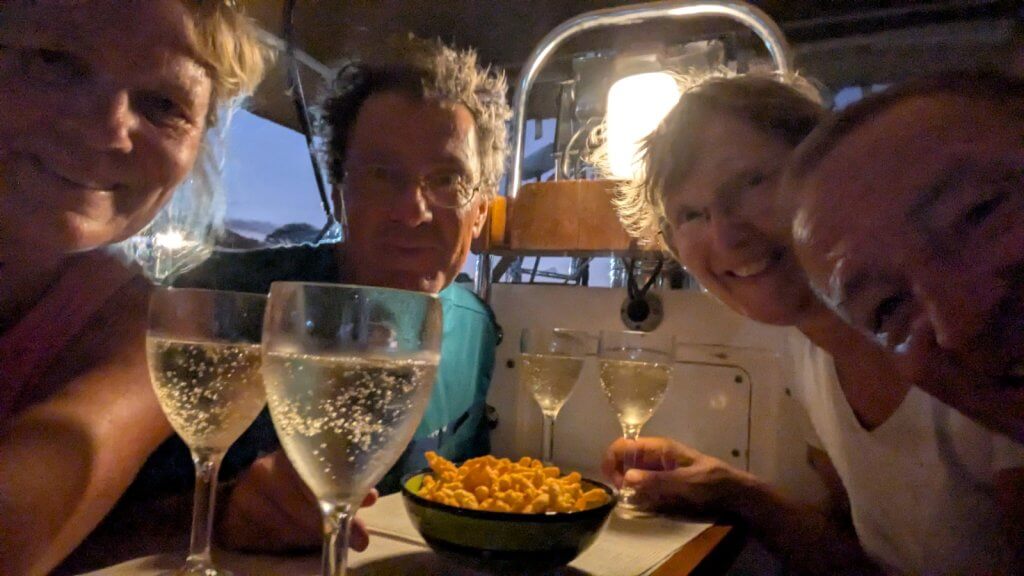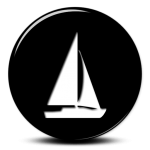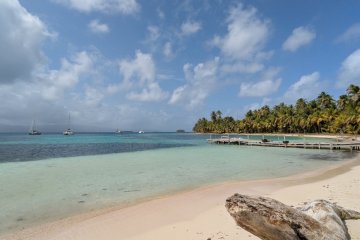After arriving back at Shelterbay Marina, our preparations for the passage through the Panama Canal got into full swing.
Maya needed to be cleaned, and supplies also needed to be replenished. All the gear off loaded before the San Blas trip had to be re-loaded and stored and a few repairs made.
Our crew, Brigitte & Peter, were volunteer “handliners” and had already been practicing the knots and helped us a lot with all the preparations.
The day before the transit we received notification from our agent that we would be setting off on March 7, 2025, at 1630. The long mooring ropes and large fenders to be used in the canal had been brought to the boat several days earlier.
Meanwhile we also met an English couple, Vicky and Nick, with their Waquiez “Amokura”, who would be our “canal buddies” as we transited through the canal.
We barely slept the night before because all sorts of things were going through our heads. There were always reports of everything that could go wrong in the locks.
The next day, after our handliner Juan came on board, we motored out of the marina and anchored outside to wait for our pilot. He was dropped off some time later from a very fast Pilot boat.
For the passage each boat needs a pilot to give instructions for entering the locks, as well as four additional handliners plus a skipper. Our handliners were Angelika, Peter, Brigitte and Juan, with John as the skipper.
The Panama Canal is an artificial connection that connects the Atlantic and Pacific sides in just 82 km. In the middle is the artificial Lake Gatun. For 110 years ships, especially large cargo ships, have used this canal to avoid Cape Horn. The canal has a total of six locks and a height difference of 26m. To this day, it is considered one of the most daring and significant construction projects in the world. Around 14,000 ships use the canal every year, making it one of the most important trade routes.
For its construction, the Chagres River was dammed, creating the artificial Lake Gatun in its center. Due to the extremely humid climate here in Panama, many workers died from tropical diseases such as malaria and yellow fever.
We entered the first Gatun Lock tied alongside the English boat “Amokura” following a large commercial ship called “Tufty”. From above, the so-called “monkey fists” (a 30-meter thin line with a heavy leather end) were thrown to us. Our handliners, Juan and Peter, were able to catch them easily and skilfully tied our long, heavy ropes to them with a bowline. These were then pulled up to the top of the lock walls by lock workers.
By now it was already dark, and we plunged into a sea of lights that brightly illuminated the next two Locks. It was fascinating as the heavy, 110 year-old gates began to close slowly behind us blocking the Atlantic sea.
Then the lock began to fill, slowly lifting us to the entrance of the next lock. There was a surprising amount of turbulence in the lock as we were lifted and the handliners were kept busy maintaining tension on the lines to keep the boats centered in the lock.
The gates to the next lock opened and the whole operation was repeated until we were 26 meters higher than the Atlantic side. Looking back you could see the series of locks and the Atlantic side of the Canal below us. An interesting sight.
We then motored along the canal, untied from “Amokura”, and proceeded in the dark to find our mooring for the night – a huge commercial mooring buoy.
Juan jumped from the boat onto the mooring buoy and tied our lines to it to keep “Maya” safe and secure. We spent the night on Lake Gatun, tied to this huge buoy,
The atmosphere was fantastic, right in the middle of the Panamanian jungle. Our pilot was picked up again by a pilot boat. I had already cooked chili con carne and everyone enjoyed it together with a beer. The next morning, John and I were up very early because we were woken up by the many howler monkeys around us. It was such an enchanting morning atmosphere that we would have loved to stay longer.
After a good breakfast, our new pilot came on board and we continued our journey. We crossed the beautiful Lake Gatun, and our pilot told us that the entire area is a nature reserve and that there is only one research station here – no one else is allowed access.
After an unexpectedly long wait at the final (Miraflores) locks, we finally passed under the Pan-American Bridge, the Gateway to the Pacific!
After the handliner and pilot disembarked, we docked at Marina la Playita, where we stayed for two nights.
Our Panama Canal passage was duly celebrated with champagne. The next day, Brigitte & Peter visited the beautiful old town of Panama.

After the second night we left the marina and Panama city and sailed (mostly motored) to the small island of Otoque).
We anchored behind the island as it was quite calm. It was also humid and hot, so we decided to go for a swim. After swimming there, we all had red bumps that must have been from the tentacles of some jellyfish.
After a calm night we left the anchorage the next morning to head on towards our final stop at Vistamar marina, about 35 miles north. The wind was very light (BF 2 – 3) and we decided to use our cruising chute (large sail). After two attempts (and untwisting the lines which always seem to get in a tangle) we had the sail well set and pulling the boat silently along at a gentle 3 – 4 knots.
Unexpectedly the wind suddenly increased to BF 6. This resulted in a bit of a rush to get the sail down as the boat speed rapidly increased to 9 knots. In my mind, I was already playing out a PAN-PAN radio call when the engine suddenly stopped. One of the lines from the cruising chute dropped unseen into the water and wrapped itself around the propeller.
John and Peter managed to unwind the tangled line without having to cut anything or go in the water. We were lucky again! The mood remained buoyant the whole time!
Unfortunately this episode resulted two burned hands and a broken line (the one that got caught in the propeller). Thankfully the aftermath was easily cleared away and we carried on under engine. John and Peter were handed cold beers to hold to soothe the burns, which could be drunk as a bonus.
After this scare, we were glad to finally arrive at the very nice little marina.
After Peter and Birgitte left the boat (after helping with sail related some jobs) we spent the last two weeks, preparing Maya for “shore leave”. The mainsail went to a friendly Argentinian sailmaker for repairs and the boat was generally tidied up.
One day, a swarm of bees invaded our boat, and despite repeated attempts we able to drive the swarm away with difficulty, only for it to return. Finally had to use our cockroach spray – we didn’t like to kill the bees, but there was no beekeeper available to collect them. The bees had already started to build a nest which left a waxy deposit where they had gathered.
A few days later we were to be lifted out onto the land. We were told we had to be ready for 0700 as that would be high tide. Because our boat is quite deep the lift could only be used at high tide. 0700 came and went and nothing happened. No workers came, and the boat lift didn’t move.
Then there was a lot of activity and workers running around – “Aha!” we thought, now we go. No. Wrong. At the entrance to the marina appeared a 120m motor yacht. The yacht was not expected by the marina until the afternoon. Of course, being a poor little sailing boat, we were forgotten until the monstrosity was in it’s berth.
It was now 0800 and the tide was already falling. The workers eventually came back to us and helped us move the boat to the lift quay. It was already late and approaching the lift “Maya” touched the bottom several times – thankfully it’s just hard sand.
Eventually we were in the lift, but there were some problems with it and they had difficulty to get it under the boat. We had visions of being stuck on the sand until the next high tide some time late in the afternoon.
Eventually it took several hours before the boat was safely on the shore.
After this we set about fitting our large winter “tent” that covers the entire boat to protect it from the sun and rain. That’s almost a whole day of work in 30C and high humidity.
Finally we could have a shower, beer, dinner and return to our rented accommodation to relax.
Now Maya is hopefully safe there, waiting for our return in the November.

